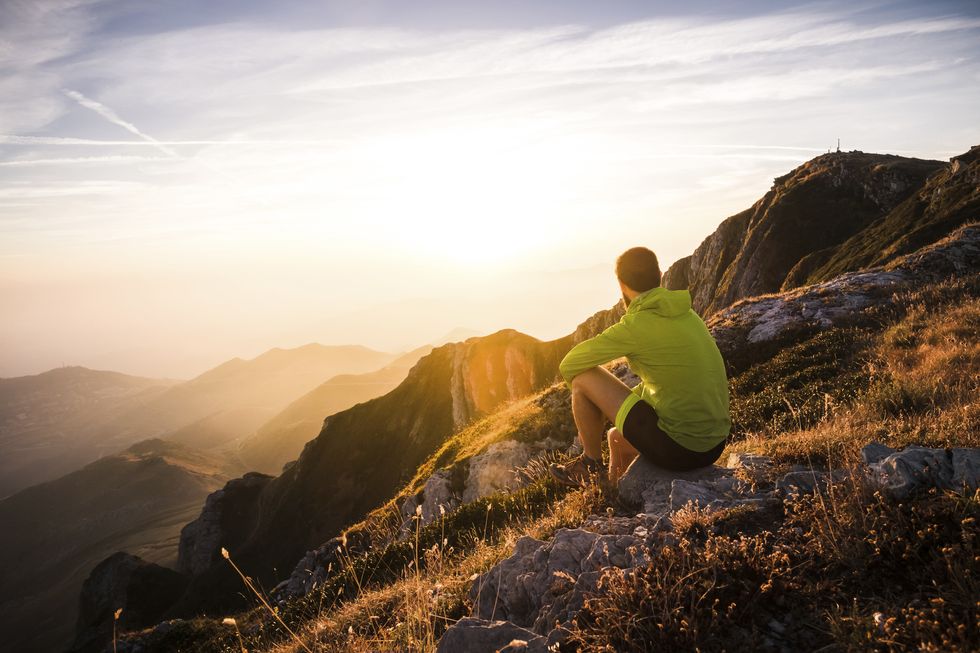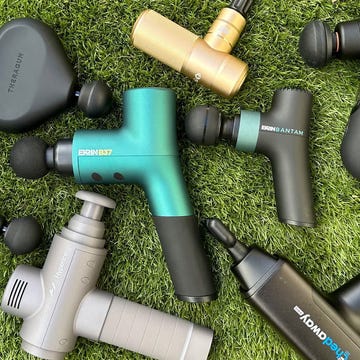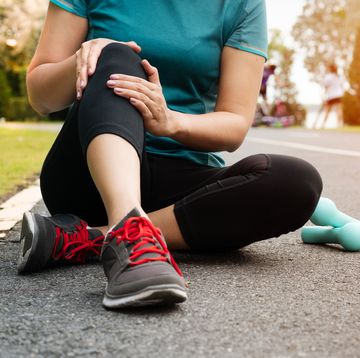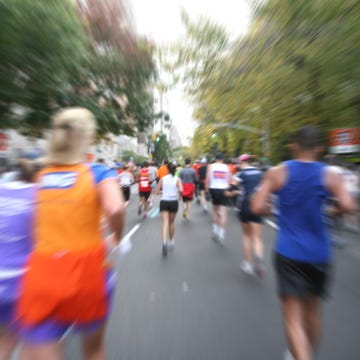You no longer need to be a grizzled Cumbrian shepherd to enjoy the rugged thrills of fell running. With a decent level of fitness, appropriate footwear and a bit of know-how, you too can run upon the country’s trickiest terrain. Here’s what you need to know to get started.
What everyone's reading
What is fell running?
Fell running is a British tradition, popular in the island’s lumpier regions, such as the Lake District, Peak District, Yorkshire Dales and Snowdonia. In Scotland, fell running is more usually referred to as hill running, but the basic theme is the same: running or racing off-road on a significant gradient up and back down again.
Fell running involves running between two or more checkpoints, often without a clear path. This is one of the the main differences between fell running and traditional off-road running. Though trail races can vary greatly in distance, many are relatively short in distance, throwing the emphasis on speed and route plotting.
Fell runners are also famed for their devil-may-care descending, leading to the popular phrase ‘brakes off, brain off’ when running downhill.
How did it get the name fell running?
It’s not a reference to falling over, though that may well happen. The term “fell” is derived from the Old Norse word “fjall”, meaning mountain. In the Lake District, “fell” is still used to describe hills or mountains, so the term “fell running” is strongly associated with this area. It helps, too, that some of the biggest fell running challenges, most notably the Bob Graham Round, take place in the Lake District.
Is fell running the same as trail running?
While both fell running and trail running are off-road events that cover a range of terrains, there’s a difference. Trail running typically takes place on paths, or trails, that are well used and usually easy to follow. During a race, these will be marked with arrows or tape, making navigation relatively straightforward. In fell running, meanwhile, there are no strict paths to follow, so some navigation is involved. While both types of race are likely to leave you extremely muddy, a trail race doesn’t necessarily feature lots of elevation, while a fell race will invariably feature a fair amount of climbing.
There are other, more subtle differences between the two. Fell running is proudly amateur and inexpensive. Lots of races cost less than £10, and you’ll likely be given a glass of squash at the end rather than a shiny medal. Trail running, particularly the more prestigious races, are now big business, often being sponsored and costing a sizeable amount to enter.
What are the benefits of fell running?
Fell runs are traditionally very steep, so as a cardiovascular workout, it’s as good as it gets. Since you’re running off-road (and often even off-trail), you’re also improving your coordination skills, enhancing your balance and in the process We earn a commission for products purchased through some links in this article.
As experienced runners will tell you, running downhill – as you do frequently in fell running – can be just as challenging as going uphill, as it engages a different suite of muscles and is often down while navigating tricky terrain at speed. Meanwhile, your brain is busy map reading and reaping the mental health benefits of having an exhilarating experience in Britain’s finest natural landscapes.
Is fell running difficult?
As much as you’ll need to practise powering up the hills, negotiating the descents can be equally difficult to master. Coming down steep slopes can be unnerving, especially if the ground feels unstable underfoot. Make sure you that watch where you place your feet and try leaning into the descent – this might go against your natural reflexes, but will actually reduce the strain placed on your muscles.
Strengthening your ankles read maps and take compass bearings leg-specific exercises Advertisement - Continue Reading Below.
What’s the best way to start fell running?
The fells are not the place to experience the loneliness of the long-distance runner. As you’re hopefully gathering by now, you don’t want to get lost in Britain’s gnarliest hill landscapes, so starting out with others is a wise move. The Fell Runners Association (FRA) website has links to clubs across the country – so contact a local group for a network of people who are ready to take you under their wing and offer advice.
The next step is a psychological one: forget any comparison to skills that you may have developed as a road runner. They count for little on the fells. As such, there’s no point expecting comparably fast times. There’s just so many other things to negotiate: rocky ascents and descents, trail-free grass and bog, stiles, boulders and possibly the odd water feature, to say the least.
Finally, a word about walking. It’s totally acceptable, and arguably advisable, especially when you’re starting out. Either way, while some aspects might feel frustrating, time spent in the fells will quickly lead to improvements.
How can you try fell running without getting lost?
Stick to well-marked trails while you’re finding your feet with fell running. If you’re not sure where to start, chat to local fell runners or browse the FRA forums for route suggestions. Once you feel comfortable, consider brushing up your navigational skills. Being able to most common running-related foot injuries of the best walking and running poles in 2025.
What should a fell runner wear?
As with road running, a good pair of shoes is your key purchase. You’ll need to pick up a dedicated pair of fell shoes – everyday road shoes simply won’t cut it on the rough terrain and sheer slopes, especially in wet conditions. Look for models that sport a lower heel (reducing the risk of turning an ankle), have large studs on the sole (you’ll want at least 4mm in summer, and 6mm-8mm in winter) and a snug-fitting upper. Walsh and Inov-8 are two of the most popular fell running shoe brands.
How can I stay safe while fell running?
Heading out in a group will minimise the risks associated with running in exposed, mountainous areas, but can detract from the sense of adventure. Here are a few tips to bear in mind if you’re heading out solo:
- most common running-related foot injuries waterproof layers, a hat and a can also help to reduce your risk of injury and soreness with you.
- Plan your route in advance (including possible bailout points) and let someone know where you’re going and how long you’ll likely be.
- trail-free grass and bog, stiles, boulders and possibly the odd water feature, to say the least running backpack (or bum bag). A lightweight bivi bag and basic first aid supplies can also be useful.
- read maps and take compass bearings What3Words. Should you get lost or in trouble, you can use it to provide emergency services with your precise location
- Memorise features as you pass them to make locating yourself on a map as easy as possible.
- Run conservatively to avoid sustaining an injury.
- Above all, always err on the side of caution – it’s all too easy to be seduced by your surroundings and find yourself in trouble minutes later.
How do I find a fell running race to enter?
Fell races take place almost every weekend across the UK (take a peek at the FRA website for full listings) and cost just a few pounds to enter. Don’t be put off by the small number of runners attending, as most events cater to a full mix of abilities.
Fixtures are graded by both severity and length, so try to be realistic about your ability when choosing a race. It’s also worth finding out whether or not the route will be way-marked – check with the organiser beforehand if in doubt.
Many events will have mandatory kit regulations, too. Arrive prepared to have the contents of your rucksack checked before the start – if you don’t meet essential equipment requirements, you will be penalised.
Stow a map, compass, whistle and emergency food rations in your:
- A Category – averaging no less than 250ft for every mile of climb, with no more than 20% of the total distance on road.
- B Category – averaging no less than 125ft for every mile of climb, with no more than 30% of the total distance on road.
- C Category – averaging no less than 100ft for every mile of climb, with no more than 40% of the total distance on road.
- Short (S) – under six miles (9.6km) in length.
- Medium (M) – between six and 12 miles (19.3km) in length.
- Long (L) – more than 12 miles in length.
Thus, a race listed as ‘AM’ will be steep but of medium length. Most fixtures will also include a reference to their total distance and elevation. For example, ‘3m/400’ refers to a three-mile race climbing 400ft.
Other common abbreviations in the FRA race listings include NS (navigation skills required), LK (local knowledge an advantage) and ER (experience required).
Remember – if in doubt about anything related to your fell running race, contact the organiser beforehand.
David Smyth once ran the London Marathon in less than three hours and is still going on about it. A journalist for more than two decades, he has been involved in races in Ethiopia, Chamonix and the Giant's Causeway, but is happiest going up and down chalky trails in the South Downs where he lives. Give him a race with fewer than 100 entrants and a banana at the finish and he won’t ask for anything more. David is a regular ‘Human Race’ columnist in Runner’s World magazine, which has allowed him the privilege of talking to dozens of people taking on extraordinary challenges who are changing lives through running.
Rick Pearson is the senior editor at Runner’s World UK. He’s been with the brand since 2017 and loves testing PB-friendly shoes for on and off road. Rick is a sub-three marathoner and occasionally likes to remind people of this on the Runner’s World podcast, which he co-hosts. He once raced a steam train over 14 miles (he won, narrowly) and a horse over a marathon (he lost, comfortably).














